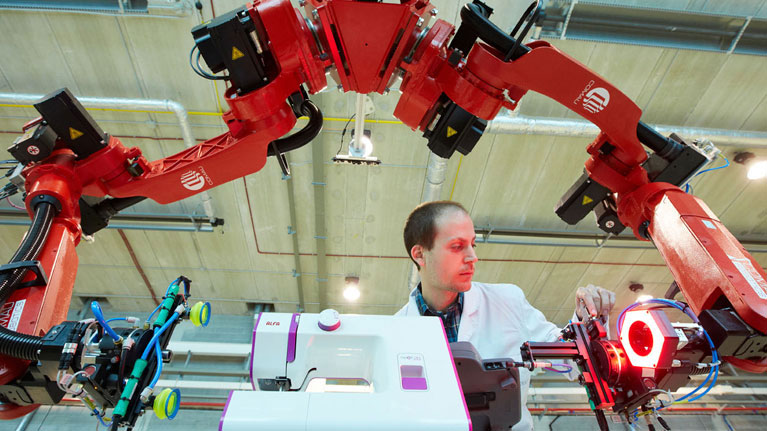Flexibility in the industry
A new generation of robots integrated with people in manufacturing environments.

Collaborative robotics, a new concept that has been developed in recent years, is here to meet growing demands as regards achieving greater flexibility for the robot-based solutions used nowadays. At a time when many processes are characterised by production runs that are not only short but also extremely variable and increasingly complex and when traditional robotics can no longer offer reasonably priced solutions capable of delivering proper returns on an investment.
These new robots provide a much more accessible robotic automation technology, particularly for SMEs, the greatest consumers of automation solutions whose main goal is to reduce costs and enhance process quality.
In this regard, collaborative robotics matches the strengths of people and robots and offers solutions for processes in which, if otherwise, it would not be an affordable automation option for tasks such as part assembling in manufacturing or the inspection of complex components.
Safety is one the key issues behind collaborative robotics. Conventional robots guarantee safety by resorting to barriers and sensors that separate people and robots. This precludes any type of collaboration.
To avoid these barriers, new products have been developed in recent years in the field of robotics in compliance with safety regulations.
There are, however, major challenges to be addressed if a safe collaboration is to be established: the introduction of safety elements removing risks inherent to each application, the incorporation of sensors to be adjusted accordingly in order to confer smart adaptation capabilities to robots and, finally, planning strategies that can offer collaborative solutions and enable task-sharing between people and robots.
It is along these lines that IK4-TEKNIKER has decided to develop a number of technologies associated with robotics geared towards ensuring safety and flexibility by installing state-of-the-art sensors and developing control systems applied both to industrial and collaborative robots.
These advances have allowed the technology centre to offer applications in diverse sectors such as logistics for product packaging or manufacturing for the assembly of complex parts in the aeronautical business.
